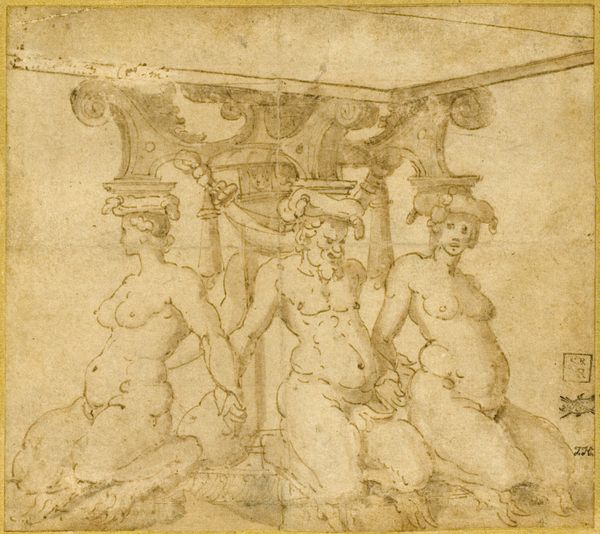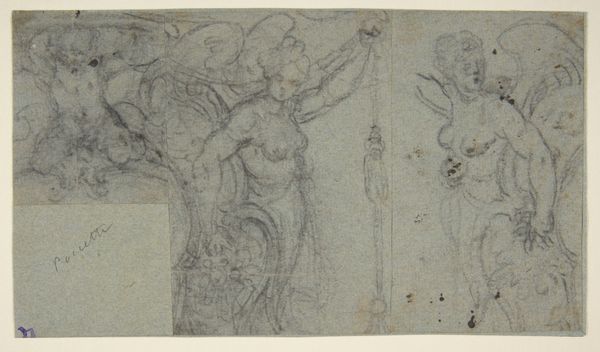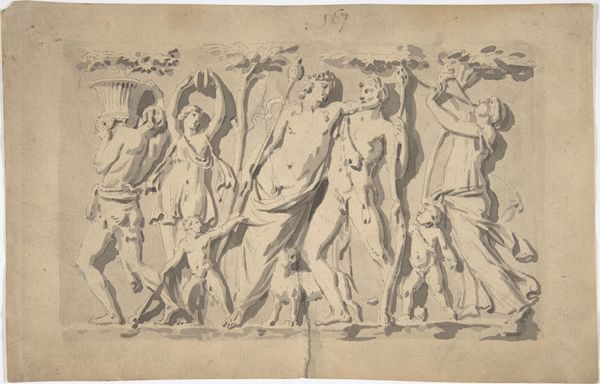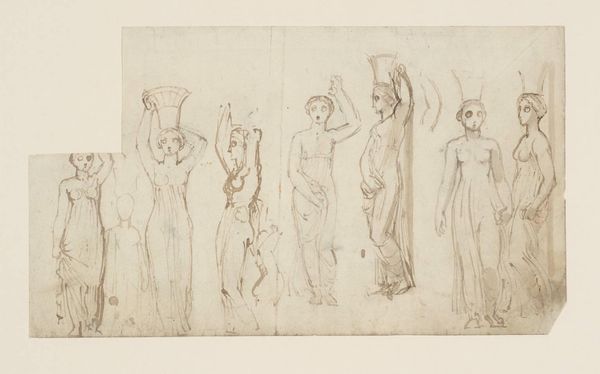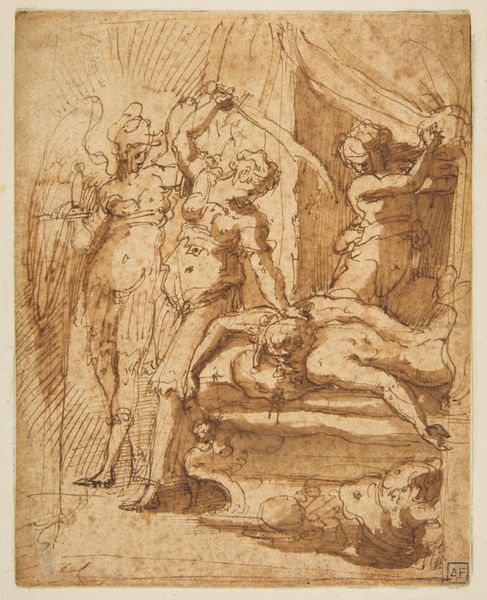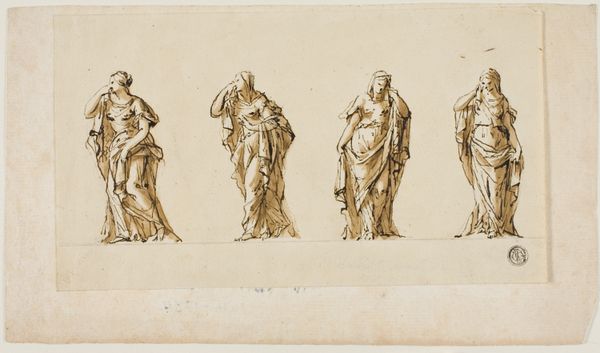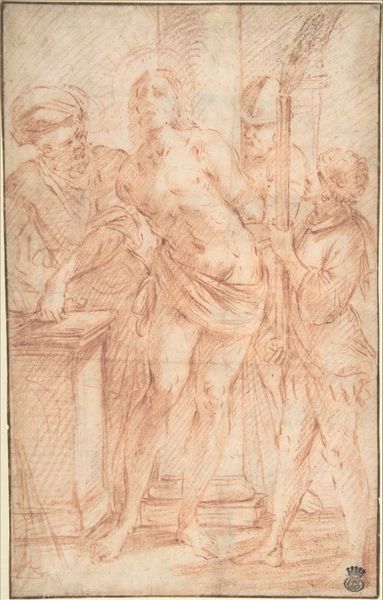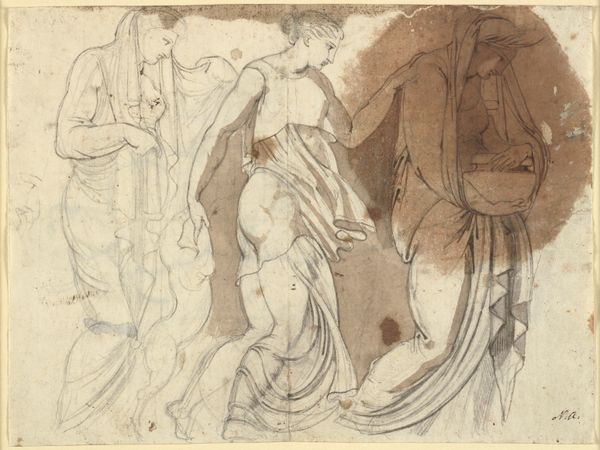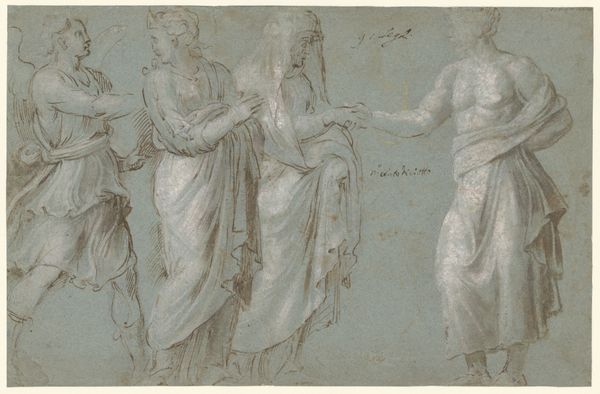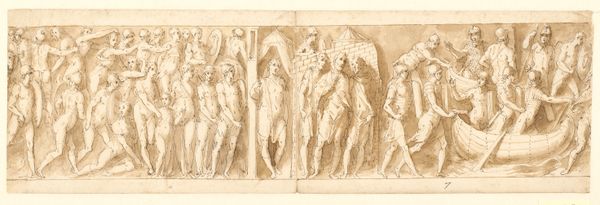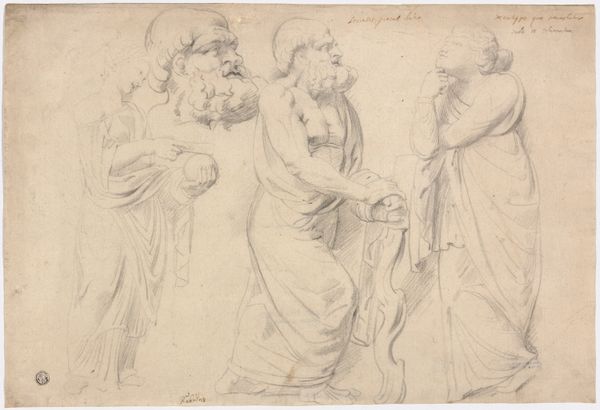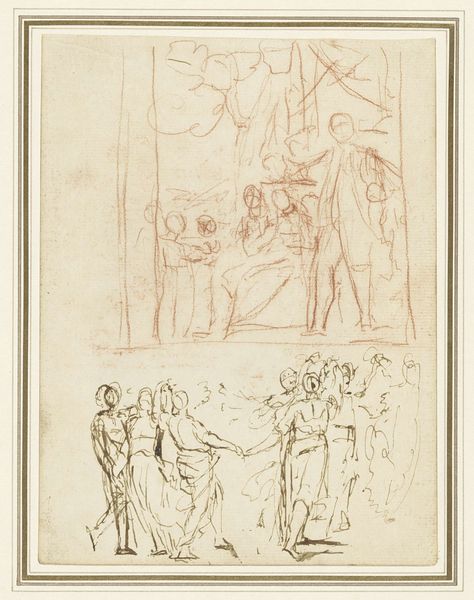
drawing, print, charcoal
#
drawing
# print
#
charcoal drawing
#
figuration
#
11_renaissance
#
female-nude
#
charcoal
#
history-painting
#
academic-art
#
charcoal
#
male-nude
Dimensions: 6 3/16 x 7 3/4in. (15.7 x 19.7cm)
Copyright: Public Domain
Curator: Before us we have a work titled "Four Canephori," attributed to Carlo Urbino, dating approximately from 1510 to 1585. It's executed in charcoal, presenting us with a series of female figures. Editor: They certainly have a spectral presence. The medium imparts a softness, yet their poses feel classical, almost stoic. It evokes a feeling of both strength and vulnerability. Curator: Indeed. The Canephori, as the title indicates, were women who carried sacred objects in religious processions. Notice how each figure holds something above her head, perhaps baskets now lost to representation, if they were ever intended. Editor: The compositional structure, with the grid-like marks in the background, feels very deliberate, and grounds what would otherwise be an ethereal gathering of forms. It highlights their presence in this earthly space despite the symbolic roles that bind them to ceremony. I see also remnants of academic life drawing. Curator: Precisely. The contrapposto exhibited in their postures is reminiscent of classical sculpture, while the variations in shading suggest a keen understanding of form and light. The arrangement across the picture plane provides a rhythmical analysis of the ideal figure. The composition seems interested less in pure mimetic reproduction, than a focus on structural harmony. Editor: Symbolically, I find myself drawn to the gestures—one clutches her breast, another raises her hand as though in offering. Each appears caught in a moment of solemn duty. They're figures caught between individual identity and archetypal symbolism. The varying levels of completion might represent a conscious exploration of woman’s role within ceremony itself. Curator: I agree. While these women were dedicated to sacred practice, Urbino also positions each figure along a spectrum that analyzes light, shade, form, and function—a sort of Renaissance decomposition aimed at ideal forms. Editor: Considering its visual impact and material form, it feels like the artist wants to invoke historical weight. Yet through careful use of detail and placement, it appears that Urbino gives us more of his individual take, in a fresh act of visual poetics. Curator: The interplay between classical allusion and artistic exploration provides the enduring richness of this particular drawing. It is interesting, even in an incomplete state. Editor: Yes, this work functions almost as a beautiful study of figures as symbolic types and a study in form, evoking past rituals to spark present considerations.
Comments
No comments
Be the first to comment and join the conversation on the ultimate creative platform.
